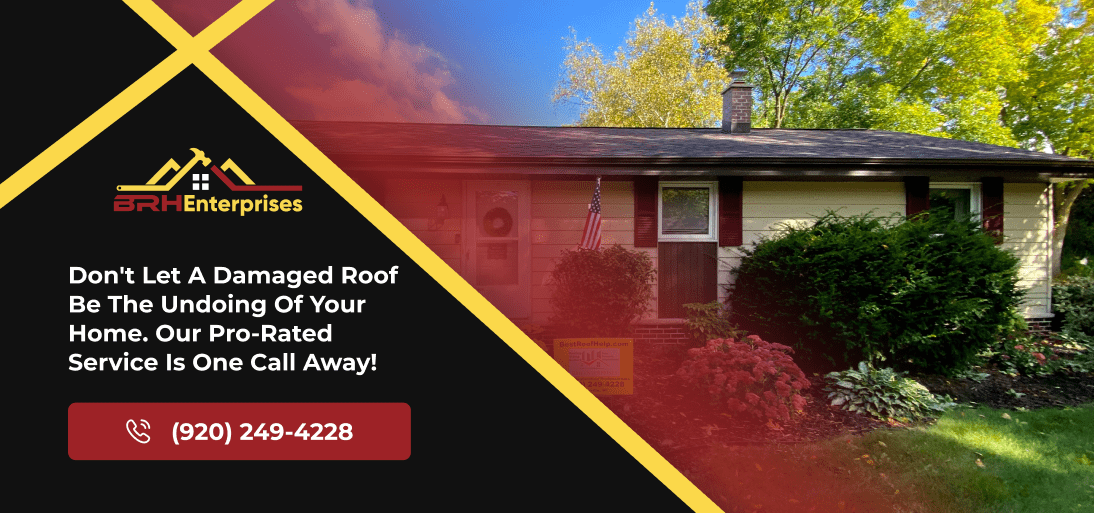12 Common Roof Types Found On Wisconsin Homes
Estimated Reading Time : 7 Min.
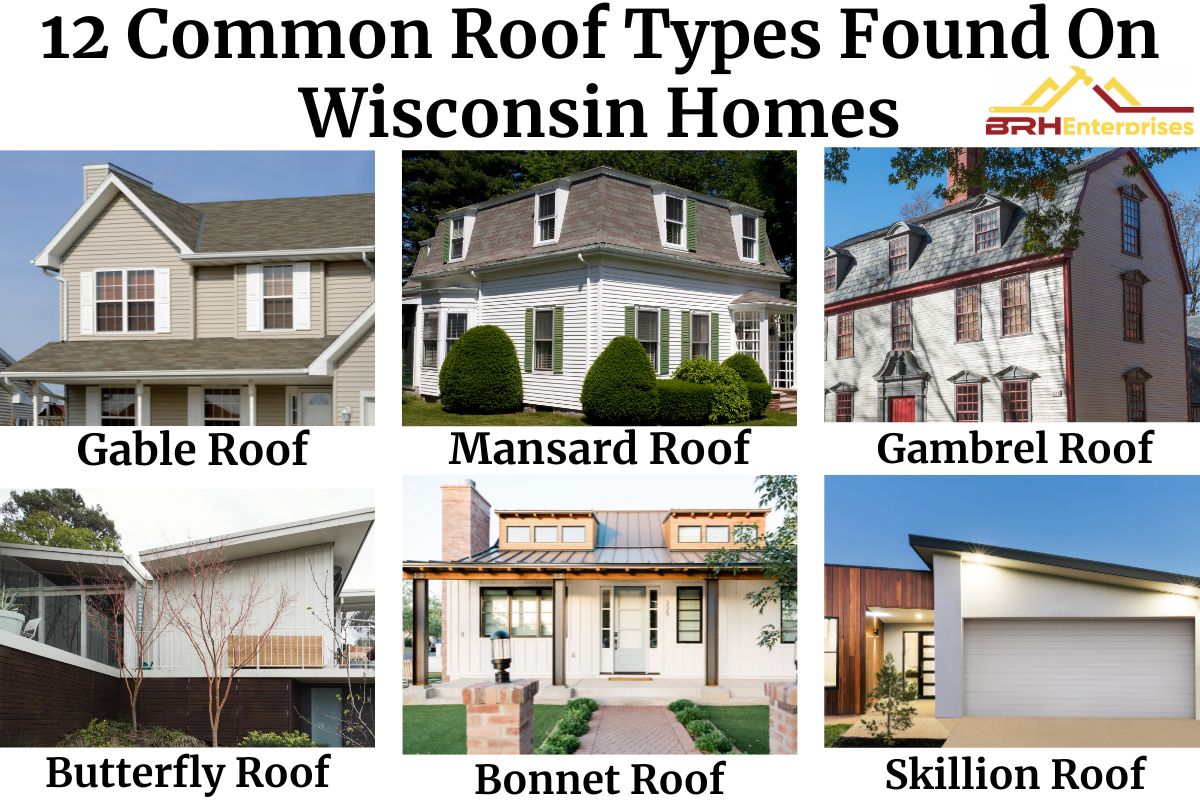
A variety of roof types can be found in Wisconsin, a state renowned for its rich architectural heritage, all of which contribute to the uniqueness of its homes. The local climate and community history are represented by these roofs, which vary in style from traditional to contemporary. To help you choose the right type of roof, this blog post explores 12 common roof types seen on Wisconsin homes.
Also Read: The Ultimate Guide to Wisconsin’s House Styles (History & Evolution)
What Are Different Types Of Roofs Found In Wisconsin?
#1. Gable Roof
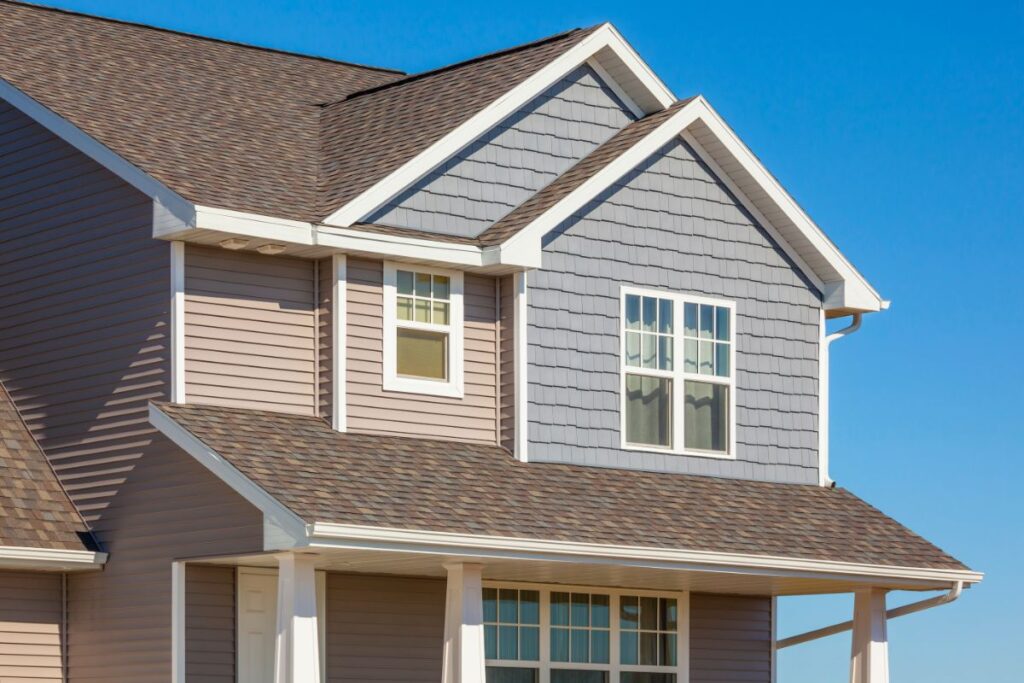
Gable roofs are a popular option for homes in Wisconsin. With two slopes meeting at a ridge, they have a simple design and steep slopes that manage heavy snowfall well. Because they typically require fewer materials to construct, gable roofs are an affordable choice.
They don’t need much upkeep, but after a lot of snow or severe weather, inspecting for leaks or damage is a good idea. These roofs provide good ventilation and drainage, along with additional space beneath the roof for storage or living. They might, however, require extra care in windy regions due to the vulnerability of the overhanging edges. In Wisconsin, gable roofs are a common and valuable choice overall.
#2. Dutch Roof
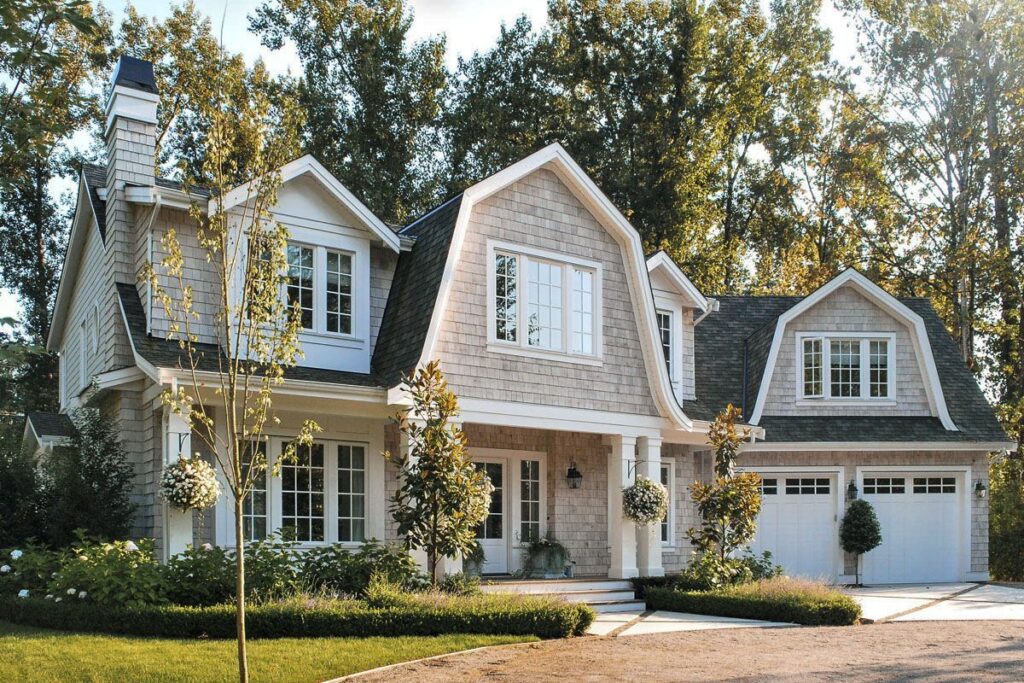
The Dutch roof, also known as a Dutch gable, is another option that is very popular with Wisconsin homeowners. Its unique design stands out, as it features two slopes on each side, one steeper than the other, to help remove snow and lessen structural stress. This roof combines the best qualities of both gable and hip roofs, providing stability and additional ventilation.
Dutch roofs combine aesthetic appeal with functional advantages, like effective snow shedding. Influenced by different architectural styles, Dutch roofs have retained their uniqueness and popularity as a roofing option worldwide, making them historically significant.
#3. Hip Roof
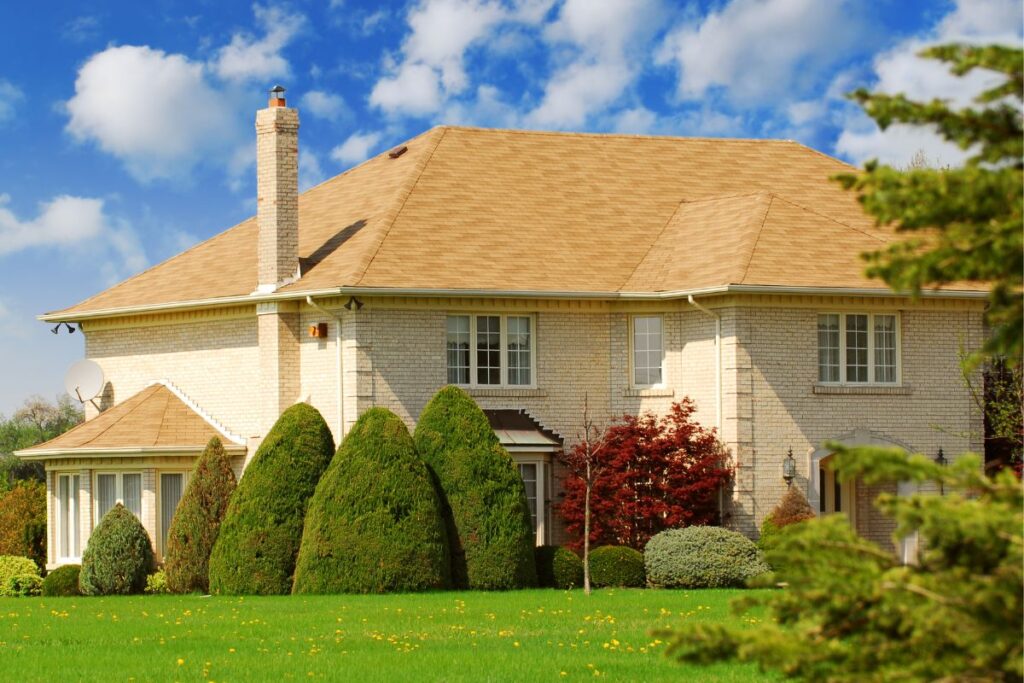
Next on our list is the hip roof, a favored option among Wisconsin homeowners for its practical and aesthetic benefits. Renowned for its strength, the hip roof provides increased resistance to wind and snow, crucial in Wisconsin’s harsh winters. With four sides sloping downwards to the walls, this design forms a compact and stable structure.
Hip roofs offer advantages such as self-bracing and stability, particularly in modern architecture like bungalows and cottages. However, they have some drawbacks compared to gable roofs, including less room inside the roof space and difficulty in ventilation and maintenance access.
#4. Jerkinhead Roofs
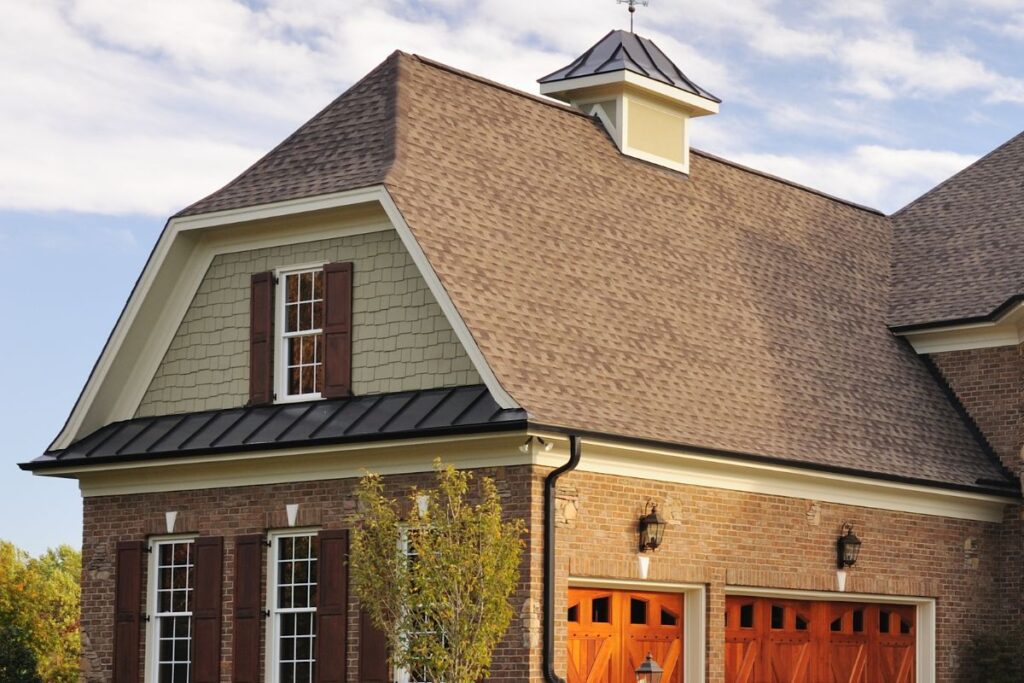
Jerkinhead roofs are a less common roof type found in Wisconsin. By clipping or turning down the point of the gable, known as ‘jerkinheads,’ this roof style offers enhanced stability against high winds, a valuable feature in Wisconsin’s weather. Jerkinhead roofs add a traditional touch to modern homes, improving the visual appeal.
While they require regular maintenance due to their complex design, with proper care jerkinhead roofs prove to be durable and attractive options. Popular in various architectural styles like Tudor and craftsman homes, they offer more loft space compared to traditional hip roofs. Despite being more expensive to maintain, these roofs combine style, stability, and functionality, making them a preferred choice among homeowners.
#5. Mansard Roof

Diving into the mansard roof, it is known for its double-slope design and ample attic space. This design has many advantages, blending classic and modern styles. This unique shape provides extra living or storage space and effectively sheds snow and ice with its steep sides. However, maintenance can be more demanding due to its complexity, requiring regular upkeep for durability.
Overall, the mansard roof offers a stylish and practical choice. Originating from French Baroque architecture and popularized by François Mansart, it remains a prized choice for many homeowners.
#6. Gambrel Roof
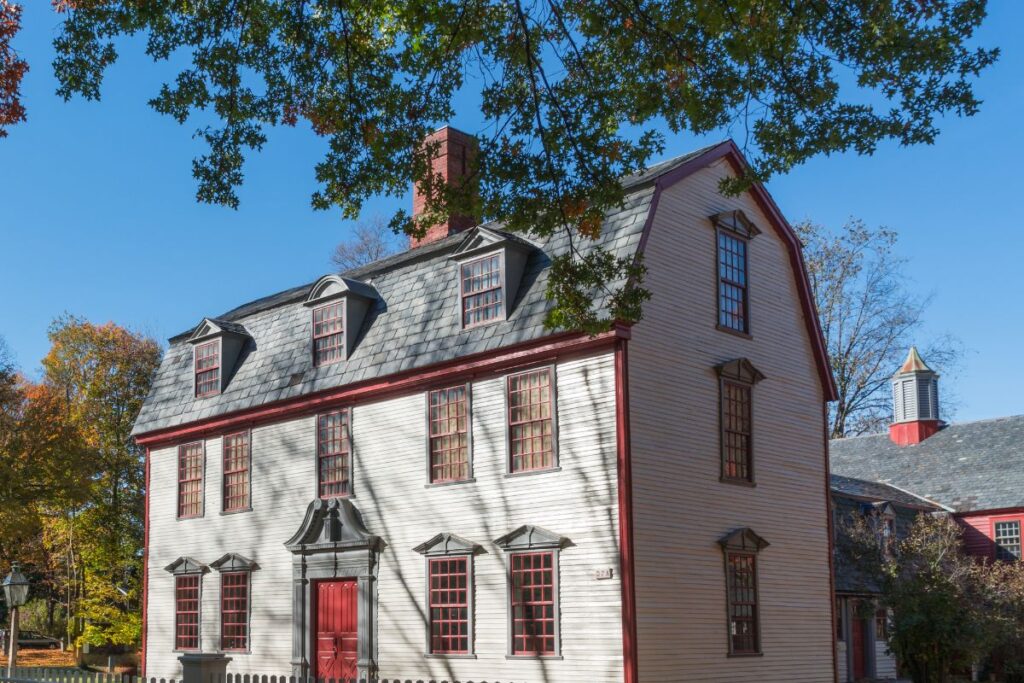
Moving onto gambrel roofs, often seen on barn or agricultural structures, offers Wisconsin homeowners a unique blend of practicality and aesthetic appeal. With steep pitches helping easy snow shedding, they’re ideal for the state’s snowy winters and attic expansion, providing ample space.
Gambrel roofs also present an intriguing opportunity for solar panel placement. Adding to their allure is their historical significance, reminiscent of early American and Dutch colonial architecture. Their classic design, offering increased interior space, simplicity, versatility, affordability, and traditional aesthetics, makes them a preferred choice across various architectural styles.
#7. Butterfly Roof

Next on our list is the butterfly roof, renowned for its unique V-shape resembling butterfly wings. This modern roof type is popular for its aesthetic appeal and environmental benefits, including rainwater collection due to its angled design, aiding water conservation efforts.
However, before opting for this roof, structural considerations are essential. Its distinctive shape requires careful engineering for stability and durability. This roof shape also increases energy efficiency by allowing larger windows for natural lighting, reducing the need for artificial lighting. Despite its complexities, the butterfly roof remains a top option for trendsetters in Wisconsin.
#8. Bonnet Roof

With its double slope on all four sides, bonnet roofs are well-known for their many benefits. A choice that is gaining popularity, its straightforward construction and design offer additional living space. A bonnet roof’s increased durability is attributed to its superior wind and rain protection.
Its energy efficiency is also impressive as it encourages air circulation to keep warmth in the winter and lessen heat buildup in summer. Because of its high wind resistance, ability to withstand UV rays and water damage, attic space, and attractive appearance, the bonnet roof continues to be a popular choice, even with potential construction complications and costs.
#9. Dome Roof
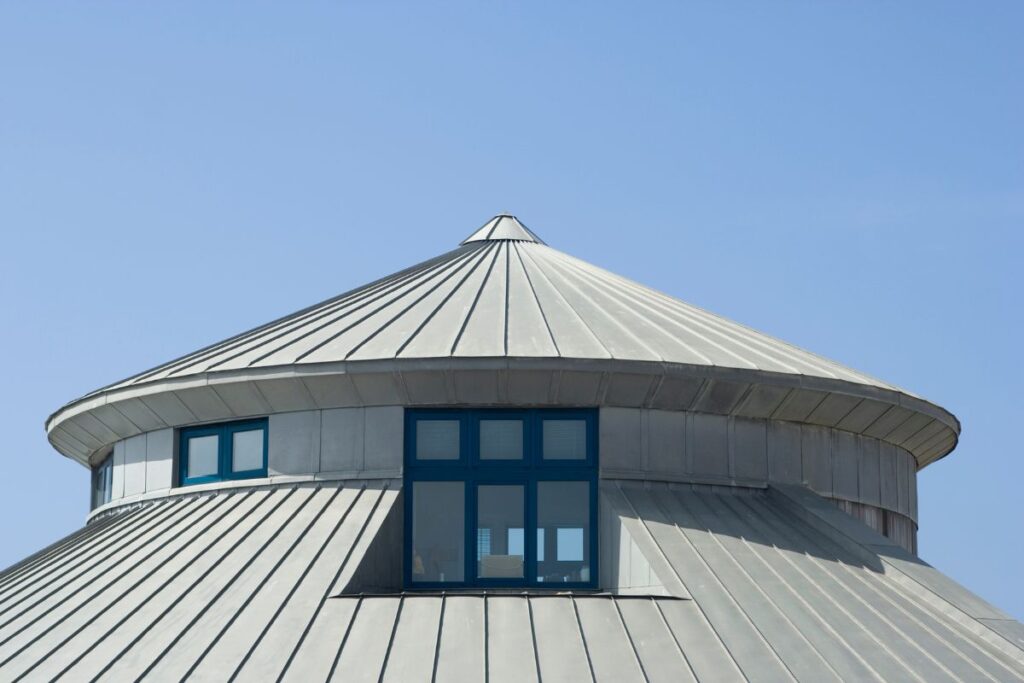
While less common in Wisconsin, dome roofs still stand out in unique architectural designs. One of its main benefits is energy efficiency, as its shape allows for even temperature distribution, reducing the need for artificial heating or cooling. Modern dome designs often use eco-friendly materials, enhancing energy efficiency and environmental friendliness.
Its functionality doesn’t compromise beauty, dome roofs are liked for their visual appeal in contrast to traditional styles. These roofs provide additional advantages such as extra living or storage space, resistance to wind, efficient water drainage, and versatility in materials and types. Despite construction complexities and costs, dome roofs offer both functional efficiency and aesthetic charm.
#10. Skillion Roof

A skillion roof, also known as a shed roof, is a less common but still significant type of roof in Wisconsin. Its single-sloping surface makes installation simple, and because fewer materials are required, the design is more affordable. The steep pitch allows for solar panel installation, ensures good water runoff, and minimizes the chances of ice dam formation.
Though frequent inspections for leaks or debris buildup are required, maintenance is comparatively straightforward. With its simple design, this roof gives a sleek and modern appearance, making it a popular choice for modern and minimalist homes, sheds, and garages. However, they may not be appropriate in high-wind locations and do not provide as much attic space as other roof types.
#11. Curved Roof
Commonly found in modern architecture, curved roofs are well known for their aesthetic appeal, and many advantages, such as enhanced wind resistance and snow load capacity, essential features in Wisconsin’s climate. Maintenance requirements are relatively low, with periodic professional inspections recommended.
Additionally, curved roofs excel in energy efficiency due to their design’s natural ventilation, which makes them comparable to flat roofs. These roofs can be constructed using various materials, including clay roof tiles, corrugated steel sheets, or asphalt shingles, each offering distinct benefits. Ensuring proper design and installation is crucial to maintaining structural integrity and visual appeal. All in all, curved roofs are a preferred choice for homeowners seeking both style and practicality.
#12. Flat Roof
Flat roofs, which have a low pitch and are frequently seen on garages and additions, are preferred for their simplicity and affordability. Although they have benefits like easier integration with solar panels and cheaper installation costs, they can have problems like leaks and water pooling.
Choosing the correct flat roof material is essential, some durable and waterproof options include single-ply membranes like TPO and EPDM. Built-up roofs are a dependable option for supporting frequent foot traffic when durability is important, while EPDM roofs can support lighter loads. Maintaining the structural integrity and overall functionality of a flat roof requires routine maintenance to prevent water damage.
What Factors Should You Consider When Choosing A Roof Type For Your Wisconsin Home?
When selecting different types of roof shapes for your Wisconsin home, several key factors should guide your decision-making process to ensure it can withstand the state’s weather conditions and provide protection:
1. Understanding Wisconsin’s Climate Challenges:
Wisconsin’s weather ranges from freezing winters to humid summers, demanding roofing systems that can handle it all. Each roof shape has its strengths and weaknesses, so choose wisely.
2. Waterproofing:
With heavy rain and snow, opt for a roof that keeps moisture out effectively and has waterproofing capabilities.
3. Maintenance:
Different roofs need different levels of care. Some might require regular upkeep, while overs may need less attention.
4. Costs:
Beyond the material cost, factor in installation, maintenance, and replacement costs.
5. Boosting Home Value:
A new roof can increase your home’s resale value. Choose a roof type that not only makes your home look good but also attracts buyers.
6. Professional Installation:
Ensure you hire experienced contractors who can install your chosen roof shape correctly, maximizing its effectiveness and lifespan.
Conclusion
A wide range of roof styles, each with its own distinct aesthetic and functionality, can be seen in neighborhoods throughout Wisconsin. Not only do these roofs protect your homes from the weather, but they also serve as a symbol of the personalities of the communities across the state, ranging from the classic gable roof to the sleek and modern skillion roof. Homeowners can make decisions that protect their properties and improve their aesthetic appeal by learning about the unique qualities and suitability of different types of roofs.
Here at BRH Enterprises, we think your roof is a reflection of your distinct style and individuality, not just a functional covering. With our professional roofing services, we go above and beyond to give you individualized direction and professional advice so you can make decisions that will improve the appeal and value of your property. Trust BRH Enterprises to complete your project with accuracy, honesty, and an unmatched commitment to quality, whether you’re starting a new building project or looking to update your current roof. Call us at (920) 249-4228.
